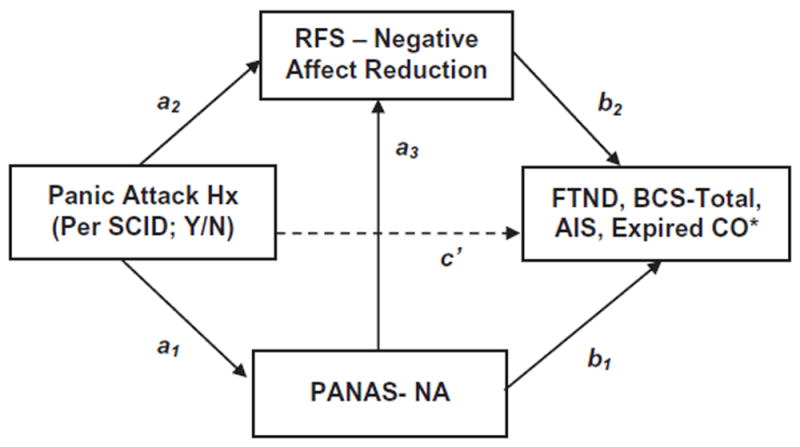Figure 1.

Conceptual path model for the effect of panic attack history on nicotine dependence, barriers to smoking cessation, smoking-based inflexibility/avoidance, and expired carbon monoxide. *Four separate models were conducted for each criterion outcome; a1 and a2=Specific indirect effects of X on M1 and M2; a3=Specific indirect effect of M1 on M2; b1 and b2=Specific indirect effects of M1 and M2 on Yi; c0 =Direct effect of X on Yi controlling for M1 and M2; a1*b1 and a2*b2=Specific indirect effects of M1 and M2; a1*a3*b2=Conditional indirect effect of M1 and M2; Hx=history. Panic Attack Hx: Any history of panic attacks (coded 0=no, 1=yes) as assessed by the SCID-I/NP; PANAS-NA: Positive and Negative Affect Scale-Negative Affect subscale; RFSNegative Affect Reduction=Reasons for Smoking Scale-Negative Affect Reduction subscale; FTND=Fagerström Test of Nicotine Dependence; BCS-Total=Barriers to Smoking Cessation scale; AIS=Avoidance and Inflexibility Scale; Expired CO=Expired carbon monoxide breath sample.
